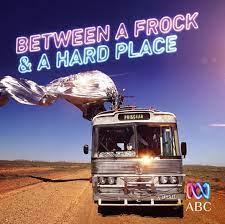
BETWEEN A FROCK AND A HARD PLACE
Australia, 2015, 57 minutes, Colour.
Narrated by Terence Stamp.
Directed by Paul Clarke, Alex Barry.
When writer-director Stephan Elliott was writing and directing Priscilla, Queen of the Desert, in the early 1990s, he could not dream of how popular the film would be, not only in Australia, but around the world.
12 years after the release of the film, this documentary offers actor, Terence Stamp, the opportunity to reflect on his taking on of the role of the transgender, Bernadette, his hesitations, the demands on him, the experience. He is seen at a desk, at the microphone, and makes his observations throughout the documentary.
Are also interviews with the director, this his second film, his background growing up in Australia, the issue of his gay orientation, the status of gay men in Australian society in the 1970s and 1980s, legislation, the first gay Mardi Gras in Sydney in 1978, the club at Kings Cross, the Drag Queens, the audiences. And there are comments from “ordinary Australian” men, homophobic, anti-poofter.
Throughout the film there are excerpts of interviews with Hugo Weaving, his acting background, coming to Australia, his career, the effect of Priscilla? There are interviews with Guy Pearce. There are interviews with the producer, Al Clarke. There are comments about Bill Hunter and his role, and Terence Stamp suggestion that he take this role.
One of the key characters in the background of Priscilla is the Drag Queen, Cindy Pastel (Richie Finger), who migrated to Australia, entered the Drag Queen scene in Kings Cross, but also married, had a son, Adam – which led to that particular plotline concerning Hugo Weaving’s character, his son, his estranged wife, the reconciliation. And the comment from Cindy Pastel about watching this sequence in Cannes with his son.
So much of this documentary is focused on the making of… The ideas, the costume design, the choice of songs, the testing of the actors, going out into Oxford Street in full drag, becoming accustomed to the costumes and their roles.
And, there is the celebration of the material made for Priscilla, the bus, and the sweeping silver sail as the bus went through the Australian countryside. The encounter with aborigines. And the three on King’s Canyon.
There are comments about the success of Priscilla at the Cannes film Festival, its becoming an international success, winning an Oscar for costumes, and then the development of the film into the stage musical and its performances throughout the world, culminating in scenes in Korea.
The Adventures of Priscilla, Queen of the Desert made a mark in 1993, but has emerged as a landmark in Australian cinema as well as in changing attitudes towards the gay community.